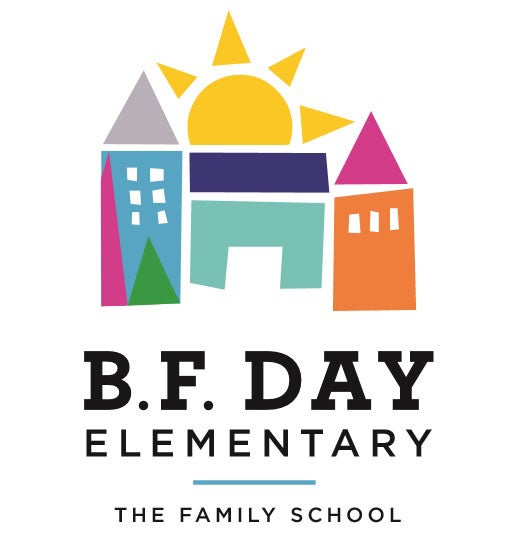B.F. Day Elementary School History
Summary: Did you know...B. F. Day is the oldest continuously operated Seattle Public School? Find out more!

Did you know…
B.F. Day is the oldest continuously operated Seattle Public School?
From Seattle Public Schools March 2024: This year, B.F. Day Elementary, also known as the family school, celebrates 132 continuous years of excellence in education. B.F. Day is the oldest operating school in Seattle and a historical landmark. Follow SPS Instagram.
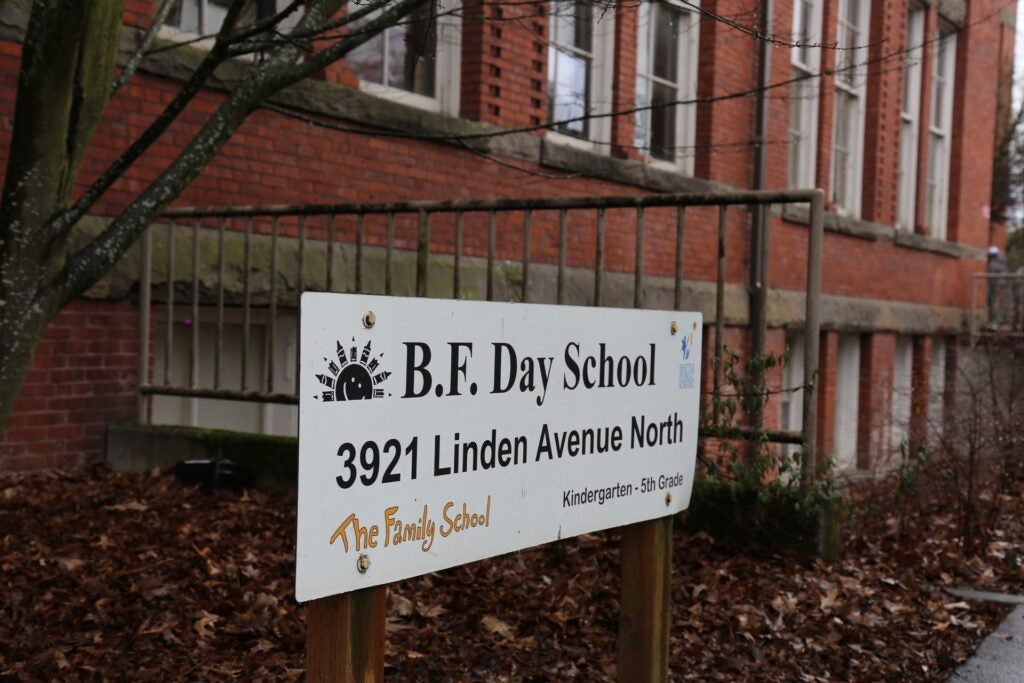
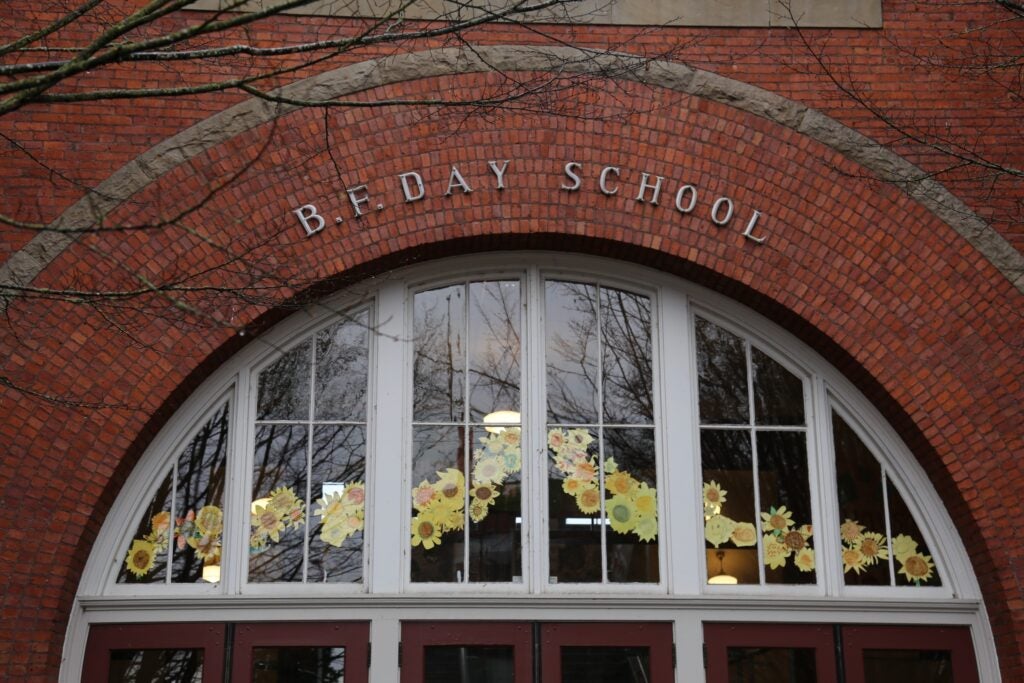
Here’s how it all came to be…
March 1889 – Two classes were held in a Fremont home on 36th Ave N and Whitman Street until a local family (Benjamin Franklin and Francis Day) donated enough money to cover rent for classes to be held in 3 rooms of a former grocery store on 36th Ave N and Aurora Ave N (pictured above). After Fremont was annexed into the City of Seattle in 1891, the Seattle School District rented the Good Templars Hall at 35th Ave and Albion Place for the school to continue classes. The shuffling of students from one site to another finally ended when the generous Day family donated a large portion of their 160 acre farm to Seattle Schools, contingent upon the new building costing at least $25,000.
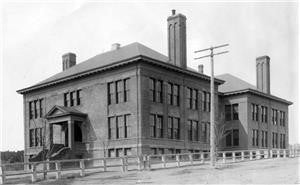
May 2, 1892 – Principal Professor Storey marched 185 students from their temporary locations into the 4 newly completed rooms on the main floor of the new BF Day Elementary School. The 1st – 6th graders entered their new school through the South facing entrance of the building (pictured above, now a side entrance off the library). By 1899 enrollment exceeded capacity so 1st graders were moved to a location on Aurora Ave and 6th graders were moved into a building once known as Cheadle’s Grocery. During this time an 8 room addition to the school was added to the North end, moving the main entrances to the E and W sides of the building (pictured below). In 1914- 1915 the school again reached capacity with 800 students, forcing yet another addition, and with it the 24 classroom building became the largest grade school facility in Seattle in 1916.
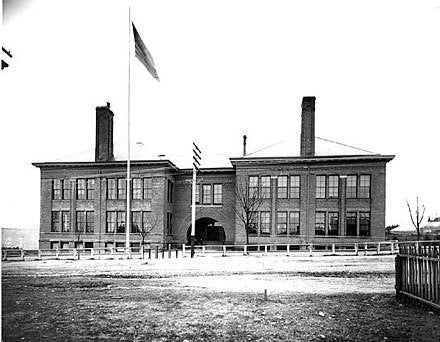
For the next 20 years enrollment was consistently high, close to 1,000 students. During World War II, boys at BF Day took Home Economics to prepare them to help out at home while many mothers worked in wartime industries. From 1981-1989 the Orca alternative program served K-5 BF Day students, integrating different ages and emphasizing performing arts, fine arts and environmental education. In 1986 the Seattle School Board decided to save the historic building, leading to a $5million renovation project in 1989-1991.
Nourished by the generosity and resilience of its community, the roots of BF Day Elementary School are deep and strong.
In the coming weeks during the celebration you’ll hear more stories about the school and some of the events and individuals who have shaped and grown BF Day to become the place we know it today – “the family school”.
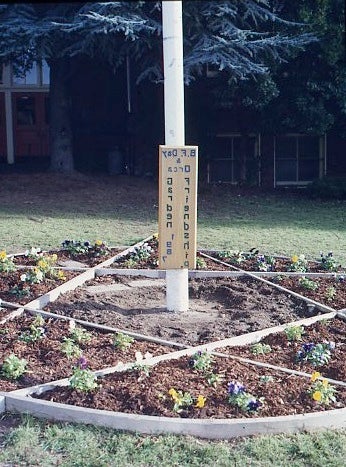
Friendship Circle Garden
Did you know…that circle garden in front of the school is known as The Friendship Garden? Here is the story of how it came to be…
In 1969 the Seattle School District offered a handful of alternative programs in response to parents who wanted a little more choice for their kids. One program was the “Free School” whose charter included a wide variety of learning experiences and informal student groupings based on individual needs of each child. This “Allen Free School”, which opened in 1972 with 44 students, grew and moved into the BF Day Elementary School in 1981. There the program’s name was changed to Orca in honor of the endangered whales in Puget Sound.
One of the Orca teachers at this time was Mrs Yolanda Gonzalez. She was the eldest daughter of Mexican immigrants and moved from Texas to Hawaii to Seattle with her husband, Frank. Mrs Gonzalez had a love of art, gardening and children. She would find ways to turn gardening projects into math and geography lessons. She was said to be the kind of teacher who made an incredible impact on students and families and would readily offer hugs. A former student of hers recalled a time when “a BF Day 4th grader was having a difficult time, acting out and repeatedly getting in trouble. She offered to have her 2nd grade Orca class help be mentors to the student and support him while at school. He would come into their class a few times during the week and he would talk to the 2nd graders about how his week had gone and what struggles he was having.
Mrs Gonzalez would ask the class what ideas they had to make his week go better. This was the kind of person she was and how much she cared about each child, not only the ones getting in trouble but also teaching her other students the kind of compassion that she believed in.” Orca was a program that valued the spirit of togetherness – the sharing and collaboration among staff and students. But while BF Day shared space with Orca Elementary, it became known that relations between the staff and students of the two schools were less than warm. So Mrs Gonzalez proposed a garden – something the students and staffs of both schools could create together – to bridge the gap. This became The Friendship Garden.
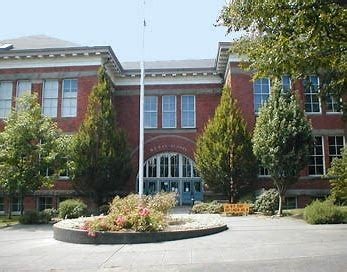
Yolanda Gonzalez took a special interest in at-risk students and when Orca moved to a different location in 1989, she opted to stay at BF Day to continue to support the students she felt really needed her the most. While she never raised children of her own, it was said that the children of her classroom became her children, and continued to be her children wherever they went, whatever they did. One former secretary recalls that there were times when Yolanda would call the school to let her know “I’ll be late because so and so is having a little trouble at their high school and I’m going to stop by and see how they’re doing, to let them know they are loved.”
While the rainbow of geraniums and blue sage plants have since been replaced with other pollinators and herbs, Mrs Yolanda Gonzalez’s legacy of compassion, love, and togetherness continues to grow and nourish The Friendship Garden, proudly welcoming all who visit B. F. Day – the family school.
Saving B.F. Day from Closure
In 1985, Seattle School Board announced its plan to close the historic B. F. Day Elementary School. Meet Carole Williams, the woman who changed everything.
On May 10, 1994, Carole Williams, then principal of B. F. Day Elementary School, was named Washington State’s Distinguished Principal of The Year, and for good reason.
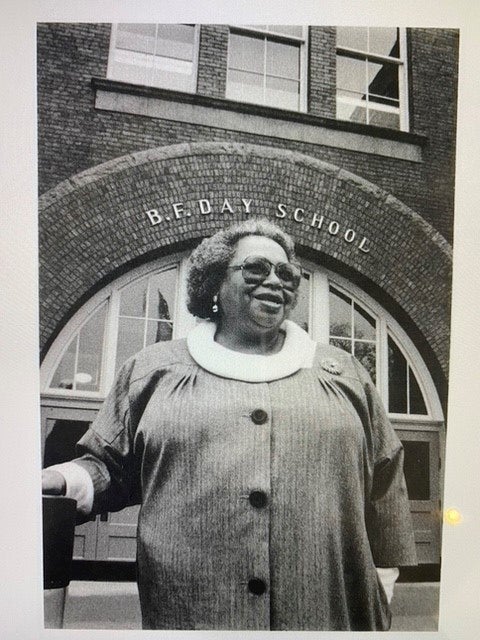
When Carole assumed her principalship in 1985, BF Day was wrought with conflict, poverty, and defeat. It was ranked #65 out of 65 Seattle Public Schools.
Of the 350 children enrolled, 175 were from single-parent families; 140 were classified as low income; 100 were living in housing projects, transitional housing (motels), or emergency shelters; 50 children were at high risk of failure; and 25 were being monitored for abuse and neglect by Seattle’s Department of Social and Health Services. Sixteen foreign languages were spoken by the children, and 60% of their families were at or below the poverty level. Over a period of 18 months, three children tried to kill themselves at school, and several others threatened to do so.
In that same year Carole started at B. F. Day, the Seattle School Board had announced the decision to close the dilapidated building and rebuild at the Lincoln High site in Wallingford and rename it “Latona”. But the Fremont community pushed back. Led by Fremont land owner/business woman Suzie Burke and Carole Williams, the community rallied together to fight the decision until the School Board finally agreed to halt the plan to move, committing instead to a $5 million renovation of the school (1989-1991).
Once the historic B. F. Day building was saved, Carole set forth to rally and inspire teachers, parents, community volunteers and corporate executives to do what her heart insisted – to now save the kids. This undertaking is no better articulated than by Carole herself:
“As a black woman who has seen more pain in the faces of neglected and abused children than I can bear to think about, I believe there is no purpose to schooling if it does not focus upon and strongly affect the cold, stark, everyday realities of little human beings ensnared in a poverty from which there is an obscured chance of escape. As the principal of B. F. Day, I choose not to be concerned with the established societal standards and bureaucratic dictates of “doing things right.” Rather, I choose to illuminate a compelling direction of “doing the right thing.” I want teachers who are willing to go the 200 yards when it comes to letting children know we will never give up on them. If that translates into hugging and holding a psychologically beaten child, if it means walking down the street and buying him a hamburger, or washing that child’s face and combing his hair—whatever—I expect it. To those who say, “Schools are for educating children,” I say, “We can educate children as to the meaning of love, trust, respect, and hope, or we can educate them as to the meaning of desperate cries that fall upon deaf ears and a disregard for human pain.”… All you need is a sense of purpose, a sense of direction, a passionate belief that you can make a difference in the life of an innocent child. If you accept nothing short of that, then your personal integrity and uncompromising sentiments will empower you to excel and breathe life into your daily, moment-to-moment decisions and actions within and beyond the school setting”… “If this school was going to change its course and assume more than academic responsibility for its students, it would require a collaboration of minds, hearts, and hands. Of this, I was sure.” ~ Carole Williams
Under Carole’s creative, compassionate and dynamic leadership, the B. F. Day community began transforming from a failing educational system to a family school – assisting parents in finding jobs, finding a place to live, finding dignity. She gave (insisted) the homeless parents a $200/month stipend to spend the entire day at school. These parents rode in with their children on the buses in the morning, and served as monitors during breakfast, lunch and recesses, which in turn freed up the teachers to work with the students more. They were welcomed with recognition and praise by the staff. These jobs helped parents to provide a ‘working model’ for their children, and also gave them a reference to use for future job applications. All of this was privately funded with grants.
Staff met weekly, watching films about prejudice and bias, stretching their comfort zones and visiting students in shelters. They learned to shift from exclusionary consequences for student behavior, to giving out more hugs.
“I realized that before we could teach these children academics, we had to reach them emotionally. . . I have found very few things that can resolve conflict, encourage creativity and empower growth as effectively as human touch.” ~ Carole Williams
So impressive was the work Carole did at B. F. Day, that in 1994 New York author Sharon Quint wrote a book about it titled “Schooling Homeless Children – A working Model for America’s Public Schools”. The book is a thought provoking and heart wrenching reflection on the impressive work Carole Williams and others did to transform the BF Day community.
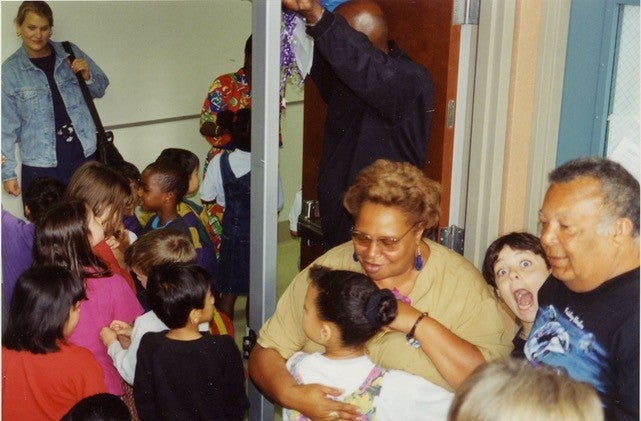
Near the end of the book in chapter 11, Quint wrote of her experiences and observations during a visit to the newly renovated and revitalized BF Day (just 2 years before Carole retired). In the chapter, Quint runs into a formerly homeless 9-year-old who happened to be watering plants on a windowsill and who beautifully articulated this about his experience at B. F. Day:
“I used to push and shove a lot. And I used to throw chairs and tables at the other kids. But I don’t make bad choices so much no more. If you make a bad choice, then you need to think about what you done and what the consequences be. Then a big person will help you to figure out why you made a bad choice. Then tomorrow is a new day, and you got a new chance to make a good choice. Anyway, I want to get a coupon for a free hug from my teacher or the principal. If I make a good choice, I get a good consequence. I can get a hug and maybe a kiss on my cheek. 1 could save up my hug coupons and get lots and lots and lots of hugs on the same day. That be real good. If you make a bad choice, that don’t mean you be a bad person. Everyone makes a bad choice sometimes. You ought to listen to Mrs. Williams. She the principal of this whole big school and she make bad choices sometimes, but that don’t mean she be a bad person. ’Cause she feel sorry, and she try her best not to do the same bad choice again. The principal, Mrs. Williams, say she no different from me. She got good days, and she got bad days. I got good days, and I got bad days. She make a bad choice sometimes, and so do I. Mrs. Williams say we the same because we both good people and we both make mistakes. But the next day we could make a good choice…. You in charge of your own self. You in charge of your own choices, and you in charge of your own consequences. If you be unhappy with your own consequences, then you better make good choices tomorrow.”
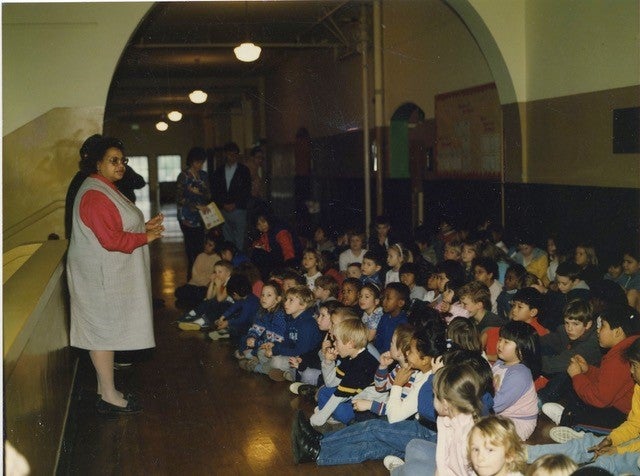
Later in the book the author observes the following:
“We can talk about healthy schools in much the same way we talk about healthy people. Schools are like living organisms, with characteristics that can be described in varying degrees as healthy or unhealthy. Schools, as culture, must assume responsibility for their health and be held accountable. This, in fact, is the case at B. F. Day. There is a sense of health and wholeness that pervades every aspect of school life. Teachers, students, and parents have a sense of belonging to a special place. To this end, B. F. Day offers an extraordinary educative environment, in a place often called “The Family School.”
Here we are, 24 years later and this Family School continues to thrive today thanks to the heartfelt work of an extraordinary woman named Carole Williams. Her legacy of love, compassion, and social justice are permanently embedded in the bricks of that old BF Day building, as well as the hearts of all who know her story.
Our History
30 years ago there was conscious effort to justify B. F. Day calling itself “the family school”
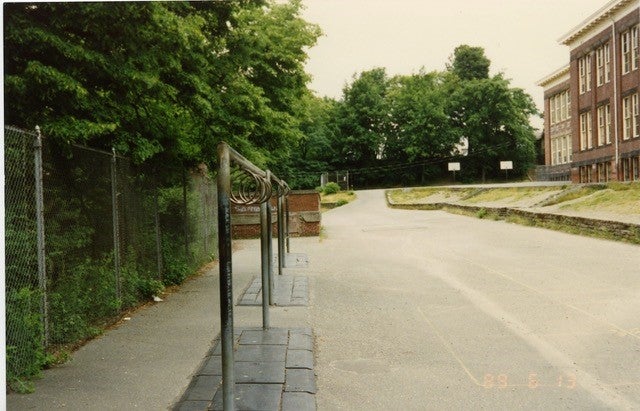
During the return of the staff and students to the newly remodeled school in 1989, then principal Carole Williams felt that although things were improving somewhat, there was still dissension among staff, angry parents, and an overall negative feeling at the school that needed to be addressed. Carole ended up partnering with Lory Misel, a clinical social worker, who identified a need better organize the school like a family. There became the conscious effort to lead the entire adult community to begin to treat one another like a family and to justify B. F. Day calling itself “the family school”. A doctrine was used to identify expectations of the adults in the community and set the tone for monthly community meetings:
We are a family. We join with each other to practice being kind, cooperative, and happy; to learn and to be of service to each other, the school, the community, the world… We treat people with… respect. We keep our word. We keep our home, school, and world safe, clean, and beautiful. We are kind, helpful, and honest, even when others do not notice. Our goal is happiness. We accept that all problems have successful solutions where everybody wins. We are polite and respectful. We can say and mean “please”, “thank you”, “you are welcome”, “I appreciate”, and “I am sorry” if we forget and act unkindly. We can say what we think, feel, and want. We are never “bad” people. Sometimes we just forget we are kind, good, helpful people.*
It was believed that when everyone followed these tenets they would be able to tell one another, and their students/children, how important they are and what good things they have seen them do, as well as that they are needed and loved and appreciated by their family school.
More and more parents got involved and would show up to these monthly meetings to answer and address issues they cared about. One parent was particularly interested and curious about opportunities to increase academic achievement, to help make BF Day a choice school for other families, and ensure students graduate with self-esteem and concern for their community. So he partnered with a teacher to write proposals that resulted in NASA grants for the school and equipment for science experiments. In reflection he said:
“The involvement my wife and I have had at BF Day for the last five years gives us some insight into the ingredients necessary to succeed with the diverse population. The principal has to have vision and management skills. The teaching staff has to be connected. The parents must be involved. Volunteers play a vital role. Interaction with the neighborhood community is enriching. Hopefully, BF Day will become the school of choice for more and more parents. If this occurs, it will be a strong indicator of our success.”
~ Paul Quay, Associate Professor University of Washington, 1994
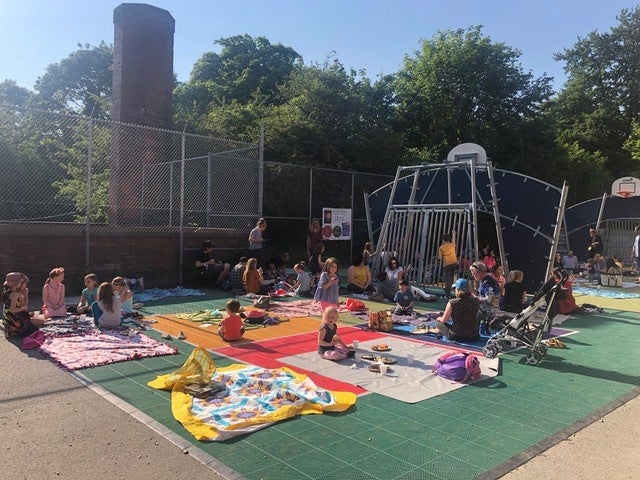
The picture above and below are the same plot of playground at BF Day, the difference (aside from a garden, a playground, and about 30 years) is the people. That, in essence, is the difference between a school and a family school. It’s showing up, it’s reaching out to say “I need help” and “I can help you”. No time has there been a more pressing need to simply show up and say to one another that we are in this together, we are a family, we might not have answers but we are not alone, you are not alone. Join our PTSA General Assembly virtual meeting to share ideas of what it means to be a family school today. Or just show up to listen, either way you being there is what makes the difference.
*from the book “Schooling Homeless Children – A working Model for America’s Public Schools” by Sharon Quint
